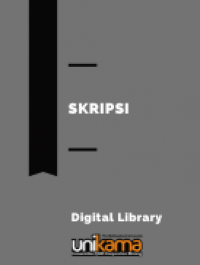
Electronic Resource
Pengembangan Media Gambar Berseri Untuk Meningkatkan Kemampuan Kognitif Anak Kelompok A Usia 4-5 Tahun Di Tk Al-Amien Sukun Kota Malang
The lack of innovative learning media used in classical learning activities causes a lack of stimulus for early childhood cognitive development. Therefore, teacher must be able to innovate it by developing interesting learning media for students to improve their cognitive abilities.This research aims to determine whether the development of serial picture media can improve the cognitive abilities of children in Group A aged 4-5 years at Al-Amien Kindergarten, Sukun District, Malang City.This research uses a research and development model from Borg and Gall. The test subjects included 1 material expert, 1 media expert, and 15 children in Group A of Al-Amien Kindergarten, Sukun istrict, Malang City (5 children were involved in the implementation of a limited field test of the initial product design, while 10 children were involved in the implementation of the operational test of the final product design). The instruments used are questionnaires for experts, observation sheets for children’s cognitive abilities, and documentation. The data analysis technique used in this development research is descriptive percentage analysis.The results of this research are as follows: (1) the results of the material expert validation in phase I showed the percentage is 61% (the initial product design is appropriate enough) with several revisions, including the appearance of original knife must be changed to a plastic knife image to be safe for early childhood, giving clear instructions in the media about how long it takes to turn on and turn off the blender during the process of making tomato juice, paying attention to the writing of capital letters on the words in the product. Furthermore, the results of the materia expert validation in phase II showed the percentage is 75% (the final product design is appropriate for use without revision); (2) The results of the media expert validation in phase I showed the percentage is 57% (the initial product design is appropriate enough) with several revisions, including the appearance of the original knife must be changed to a plastic knife to make it safe for children, the physical media of serial images made the size of a notebook so that it is not too big, the sentences in the product are adjusted to the understanding of early childhood, the consistency of writing the font in the product. Furthermore, the results of the media expert validation in phase II showed the percentage is 75% (the final product design is appropriate for use without revision). The results of the limited field test are known to have a total score of 47 with a percentage of 78.3% in the proper category. However, observing the results of the validation of material and media experts in phase I showed that both experts provided revisions to the initial product design, so that the researcher corrected it according to their suggestions so that the final product design would be tested on large group subjects (operational test). The results of the operational test are known to have a total score of 111 with a percentage reaching 92.5% with a very appropriate category so that it becomes the final product that has passed the validation test process of material and media experts (phase I and II) and has been tested on small group subjects (limited field test) and large group subjects (operational test).The conclusion of this research is that the development of serial picture media can improve the cognitive abilities of children in Group A aged 4-5 years at Al-Amien Kindergarten, Sukun District, Malang City. The appropriateness percentage is ranged from 75% (appropriate) to 92.5% (very appropriate). It is recommended that this product be reviewed and adapted to the target subject, especially if this product will be applied to wider subjects, so that evaluation results are obtained to correct existing deficiencies and this product can really be applied to similar subjects with a wider scope
Ketersediaan
| 21345040/SB/2022 | KKI 372 AFI p/s | Perpustakaan Unikama | Tersedia |
Informasi Detail
- Judul Seri
-
-
- No. Panggil
-
KKI 372 AFI p/s
- Penerbit
- Malang : PGSD - Unikama., 2022
- Deskripsi Fisik
-
xv, 82hlm 26cm
- Bahasa
-
Indonesia
- ISBN/ISSN
-
-
- Klasifikasi
-
372
- Tipe Isi
-
text
- Tipe Media
-
PDF
- Tipe Pembawa
-
-
- Edisi
-
1
- Subjek
- Info Detail Spesifik
-
-
- Pernyataan Tanggungjawab
-
-
Versi lain/terkait
Tidak tersedia versi lain
Lampiran Berkas
Komentar
Anda harus masuk sebelum memberikan komentar
 Karya Umum
Karya Umum  Filsafat
Filsafat  Agama
Agama  Ilmu-ilmu Sosial
Ilmu-ilmu Sosial  Bahasa
Bahasa  Ilmu-ilmu Murni
Ilmu-ilmu Murni  Ilmu-ilmu Terapan
Ilmu-ilmu Terapan  Kesenian, Hiburan, dan Olahraga
Kesenian, Hiburan, dan Olahraga  Kesusastraan
Kesusastraan  Geografi dan Sejarah
Geografi dan Sejarah